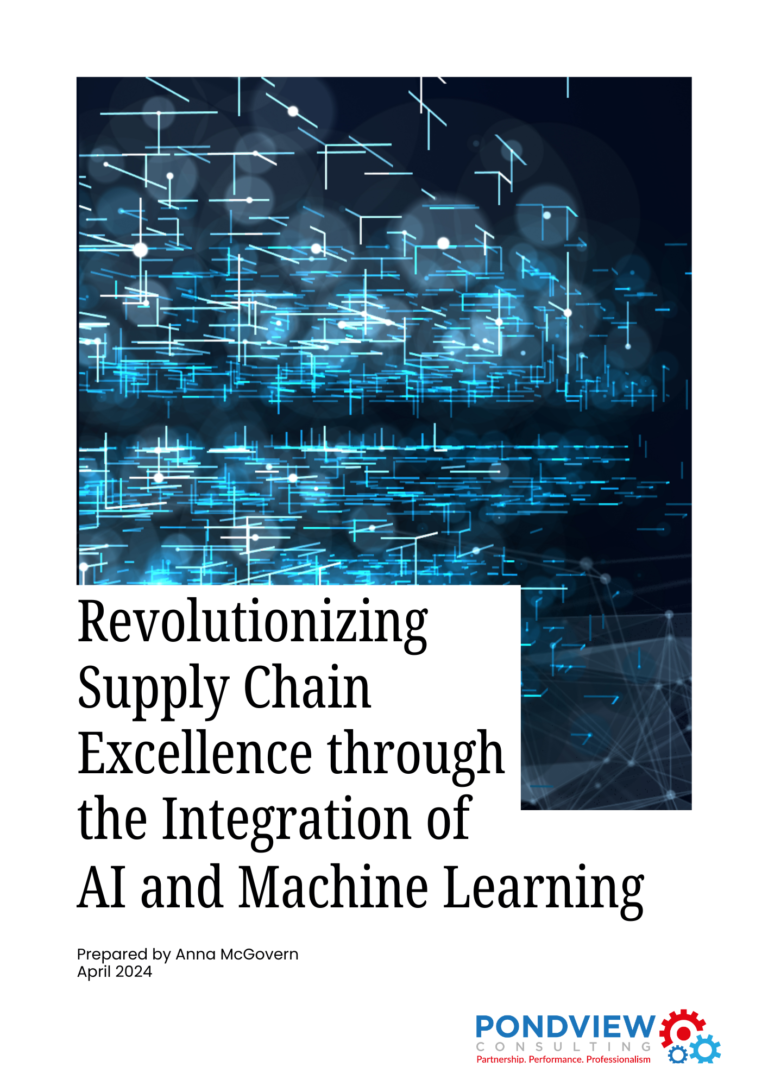Technology – specifically AI – is changing the supply chain game. In doing research for a new white paper that I will be publishing this spring, I have been looking at how AI is transforming both the supply chain and the role of supply chain leaders. Here’s a quick look:
What Is AI?
Artificial Intelligence (AI) refers to the ability of machines to perform tasks that would typically require human intelligence. This includes tasks such as learning, recognizing speech, making decisions, and solving problems. There are several sub-systems of AI, including:
- Machine Learning enables machines to learn from data and improve their performance over time.
- Natural Language Processing (NLP) enables machines to understand and interpret human language.
- Predictive Analytics involves using statistical models and forecast techniques to understand future events.
- Optimization Algorithms find the most efficient solutions to complex problems, such as rerouting delivery vehicles to minimize delays and costs.
- Robotics enables machines to interact with the physical world.
Overall, AI technology has the potential to revolutionize the way we live and work, and understanding its capabilities and limitations is critical for leaders in today’s world.
Old-School Leadership versus Leadership in an AI World – What Has Changed?
We now live in a world of continuous disruption. In the post-pandemic era, we refer to it as the “new normal.” But it really is no longer new; it is simply normal. The most recent supply chain disruption, the collapse of the Francis Scott Key Bridge, is a tragic example of how these events simply become part of our day-to-day planning cycles in supply chain and procurement.
Why Do We Need a Shift in Leadership Thinking?
AI is revolutionizing the way we work and do business. Consequently, it is critical for leaders to understand how AI works and how it can be leveraged to drive innovation and growth. By upgrading the old-school leadership playbook with AI, leaders can stay ahead of the curve and unlock new opportunities, including:
Technological Advancement
Rapid innovation in AI and machine learning has transformed capabilities across sectors, necessitating a leadership style that embraces and integrates these technologies.
Data-Driven Decision Making
The availability of big data and AI tools for processing data has shifted the decision-making paradigm from gut-based tribal knowledge to data driven, requiring leaders to adapt to a more analytical approach.
Workforce Evolution
As AI automates routine tasks, the workforce is evolving with a focus on more complex, creative, and strategic roles, thereby changing the leader’s role to that of facilitator and enabler of human potential. Leaders need to also be aware of what the workforce training and development needs are. There are now five generations in the workforce, all of whom have different needs and varied technology skills. Setting clear objectives and expectations regarding upskilling and the use of technology is imperative.
Using AI Technology Ethically and Effectively
One of the biggest benefits of AI technology is its ability to help leaders make better decisions faster. However, to fully leverage the power of AI, leaders must ensure that it is being used in a way that complements their decision-making processes and helps them make informed decisions. To be successful in integrating AI into the supply chain, leaders must:
Integrate AI with Human Insight
Use AI as a tool to provide data-driven insights, but always cross-reference these findings with human experience and understanding, to make balanced decisions.
Be Aware of Inherent Bias
AI can amplify human biases and prejudices, and it is therefore critical for leaders to consider ethical implications when adopting AI. Leaders must ensure that AI is used in a way that is aligned with their values and principles and does not compromise the integrity of the organization.
Build Transparent AI Systems
Ensure that AI systems are transparent and that their decision-making processes can be explained. This helps leaders to trust and effectively interpret AI-generated insights. Think of a transparent AI system like a clear glass jar. Inside the jar, you can see how everything blends and fits together. In the world of AI, that means making a computer program that not only gives you answers but also shows its work – like a math student writing the steps to their solution.
Regularly Update Models
As businesses and environments evolve, so should AI models. Leaders must keep AI systems updated with the latest information and feedback, to maintain their relevance and accuracy.
The Future of Leadership in an AI-Centric World
Leadership is changing in an AI-centric world, and leaders must develop a new set of skills and a fresh mindset to lead effectively. They must embrace the opportunities presented by AI and remain ahead of the curve to stay competitive and drive growth.

I am thrilled to announce the release of my latest white paper,
“Revolutionizing Supply Chain Excellence through the Integration of AI and Machine Learning”
In this paper I cover the transformative potential of AI and data visibility, offering strategies and insights for leaders looking to harness these technologies to drive organizational success in the coming years.
📑 What’s inside?
✅ Key trends shaping the integration of AI in management.
✅ Practical strategies for improving transparency and decision-making with data.
✅ Walmart case study demonstrating successful AI in spend management and negotiation.
This paper has been in the making for a few months. I think you will find it insightful. AI is changing the supply chain game. Request your copy.


2 thoughts on “AI Technology and Your Supply Chain”